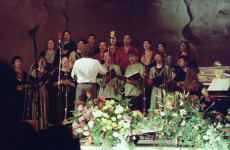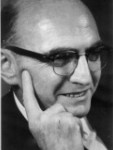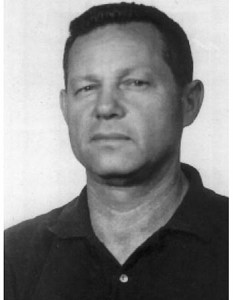
Yossi Harel, born in Jerusalem, was the commander of the emigrant ship ‘Exodus 1947’ and later a leading member of the Israeli intelligence community.
Yossi Harel tells Exodus story from the commander’s perspective
I was surprised after Yossi Harel finished speaking that the 40-50 people invited by the Tel Aviv Foundation to hear him May 15 at Reina and David Shteremberg’s home in La Jolla didn’t jump to their feet as one to give him a standing ovation. Harel’s stirring story is the kind that makes your heart swell with gratitude that God made you a Jew.
Perhaps the more restrained response was because Harel, today an octogenarian, seems so shy, and so modest about himself that people didn’t want to embarrass him by their effusions.
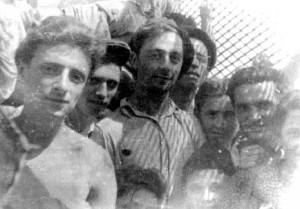 The simplicity of the man – measured against his deeds – reminded me of the time I toured the historic home of Paula and David Ben-Gurion in Tel Aviv. To pass between their kitchen table and the cabinets, one practically had to turn sideways. Such an unassuming home for someone as important to the Jewish people as Ben Gurion! But he was not a man of large possessions, rather he was a man of big deeds. So too might it be said about Harel.
The simplicity of the man – measured against his deeds – reminded me of the time I toured the historic home of Paula and David Ben-Gurion in Tel Aviv. To pass between their kitchen table and the cabinets, one practically had to turn sideways. Such an unassuming home for someone as important to the Jewish people as Ben Gurion! But he was not a man of large possessions, rather he was a man of big deeds. So too might it be said about Harel.
Harel was a youngster in the pre-Israel Independence Haganah underground forces when he was directed to study coastal navigation – study that led to him being named the post World War II commander of the effort to smuggle immigrants past the British blockade and into Palestine. Most people of my generation know his story very well; as it was fictionalized in the movie Exodus starring Paul Newman.
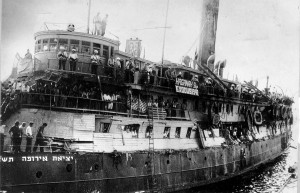
The real Exodus was among the ships under Harel’s command. The captain of that ship, Ike Arianne, coincidentally is coming to San Diego to speak June 5 to the Alpine Jewish Connection and June 8 to Congregation Beth Israel about his experiences.
In describing the journey of the Exodus and other immigrant ships, Harel emphasized three major points: the awesome sense of responsibility he felt trying to ferry people from the camps of Europe, especially for the youth who had survived the Holocaust, and the dangers that the clandestine ships faced along the way.
Harel remembers the children the most vividly. On one ship, he remembers a boy who used to dig tunnels from a nazi-guarded ghetto to the city outside. His father wanted him to sneak his sister out, but the sister wouldn’t leave the parents. So the boy’s father told the boy to leave the ghetto on his own, and not to come back. The father knew the nazis eventually would take them all away. The boy did as he was told, later telling Harel “I never again saw my father, my mother, my sister; they went to heaven through the chimneys of Auschwitz.”
To his La Jolla listeners, Harel reflected; “You listen to this story and you begin to understand what is the command you got.” On that particular ship, there were 4,000 passengers, and “everyone had an equivalent story.” It gave rise to the determination that while the British might be successful in stopping some ships from disembarking its passengers in Palestine, it couldn’t stop all of them.
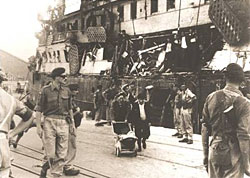 At one of the Displaced Persons camp from which Exodus passengers were chosen, he remembered a girl who held a little boy’s hand tight. Was she the older sister, he wondered? No, he learned from the camp’s Haganah commander. She had been sent by her Jewish parents to a monastery where she posed as a Catholic. The little boy came later, but was too young to understand what was required of him. At night, he cried in Yiddish for his mother – dangerous because the Gestapo would yank such children from the monastery and execute them. The girl hushed him, taught him how to make the sign of the cross and other prayers, and remained his protector to that very day.
At one of the Displaced Persons camp from which Exodus passengers were chosen, he remembered a girl who held a little boy’s hand tight. Was she the older sister, he wondered? No, he learned from the camp’s Haganah commander. She had been sent by her Jewish parents to a monastery where she posed as a Catholic. The little boy came later, but was too young to understand what was required of him. At night, he cried in Yiddish for his mother – dangerous because the Gestapo would yank such children from the monastery and execute them. The girl hushed him, taught him how to make the sign of the cross and other prayers, and remained his protector to that very day.
The immigrant ships navigated waters that under normal circumstances were treacherous; let alone when the ships sat deep in the water because they were overloaded with passengers. They were short on food, fuel and water, often having to cut rations as they neared their destination.
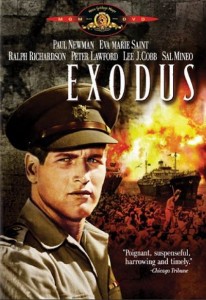
On one ship, a Greek captain and senior crew member began making the sign of the cross on their chests as they looked at the rocks of Peloponese. “When you see the captain and the chief do that, you know something is wrong,” Harel recalled, his understatement prompting laughter from his La Jolla listeners. The strong waves were driving the 50-year-old ship toward the rocks, and the heavy-in-the-water vessel had insufficient power to counteract their force. Six miles from the rocks, than five miles, then four miles…
“I could see that the ship was going to wreck,” he said. “We didn’t have a single lifeboat, what can we do? So you sit on the bridge, and you watch, and all of a sudden you see the waves parallel to the coast beginning to change direction. The winds changed! Slowly we passed by maybe 200-300 yards offshore. We had 4,000 people aboard. Maybe the supplication of the captain helped!”
On another occasion, a ship had to be navigated through the Bosporus – but to get to the straits, it needed to first sail through waters that the Russians had mined during World War II. A Russian pilot refused to sail at night, so a Haganah member was assigned to read the charts and get the ship through. “It was the longest night of my life,” said Harel.
“Overall,” Harel said, “we brought 100,000 people but this was the bloodiest war we ever had. In the War for Independence, we had 600,000 Jews, and we lost 6,000 – one percent.” Running the blockade, he said, “we lost over 3,000 people drowned in the Black Sea – three percent…
“With all these casualties, they kept coming, they didn’t stop,” he marveled. “A nation destroyed was coming back to life.”



